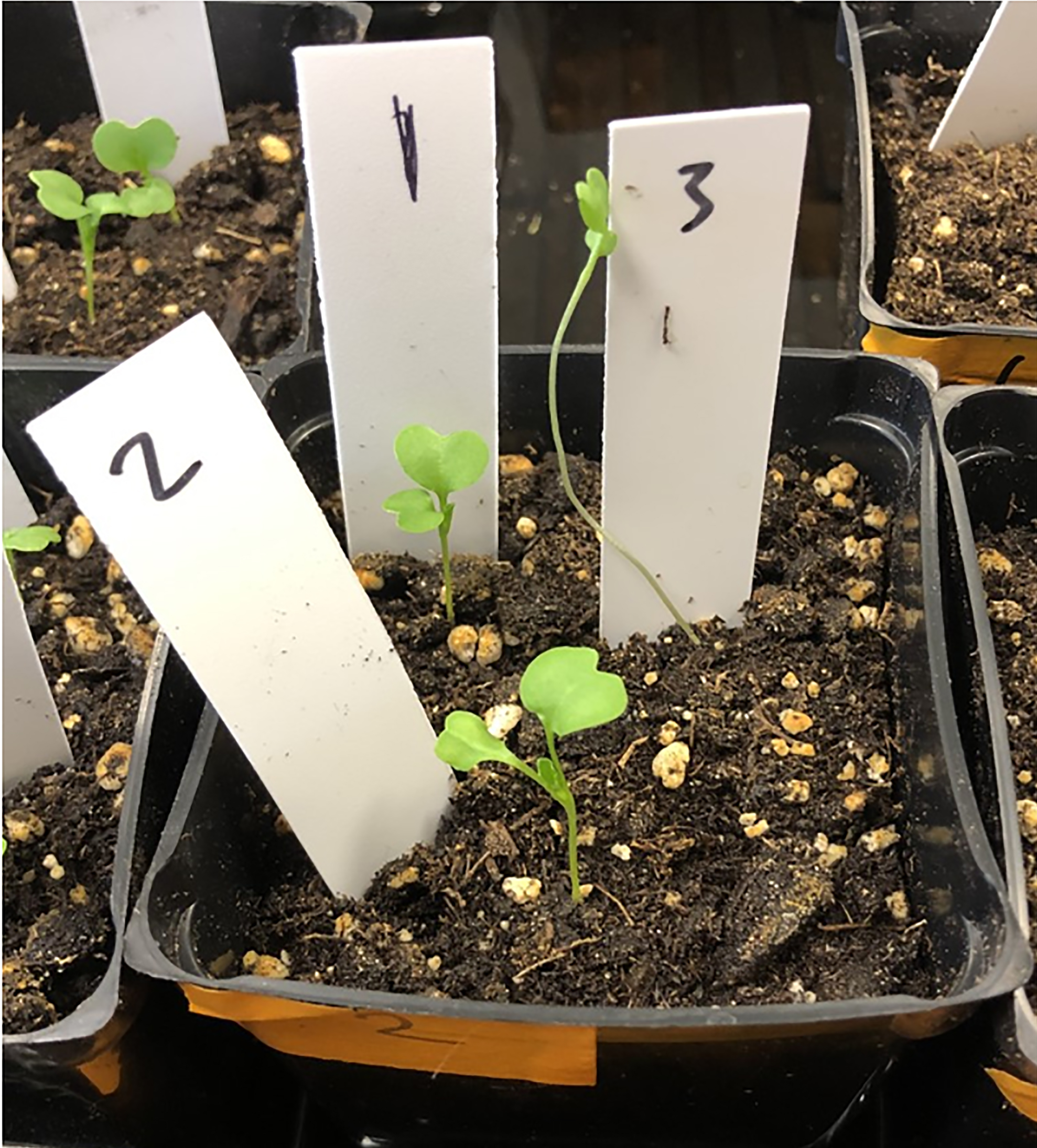
Some concepts in genetics, such as genetic screens, are complex for students to visualize in a classroom and can be cumbersome to undertake in the laboratory. Typically, very large populations are needed, which can be addressed by using micro-organisms. However, students can struggle with phenotyping microbes. For macroscopic organisms, the number of offspring produced, and the generation time can be challenging. I developed this lesson as a small-scale genetic screen of Fast Plants®. These plants are amenable to teaching labs as they have simple growth requirements, a short generation time, and produce numerous seeds that can be stored for years. Seeds used for this screen are purchased pre-treated with a DNA damaging agent, removing the need for in-house use of mutagens. Also, students can screen the phenotypes without specialized equipment. The initial lesson begins with an examination of the first generation of plants. Later their offspring are screened for altered phenotypes. Students responded well to having full-grown plants available on the first day of the lab project. This lesson fostered student collaboration, as they worked with class datasets. Differences in growth due to mutagenesis treatment in the first generation were clear to students who had not worked with plants before. Identifying plants with altered phenotypes in the next generation was more of a challenge. This lesson incorporates key concepts such as somatic and germline mutations, the impact of such mutations on phenotype, and the inheritance of mutation alleles, and provides a hands-on way to illustrate these concepts.
Primary Image: Fast Plant® phenotype differences observed in the M2 generation. This pot contains three full-sibling M2 seedlings from a single M1 parent plant. The seed of their parent plant received 50 Krads of radiation. Plants 1 and 2 are of standard height, while plant 3 is greatly elongated. Image by AL Klocko.